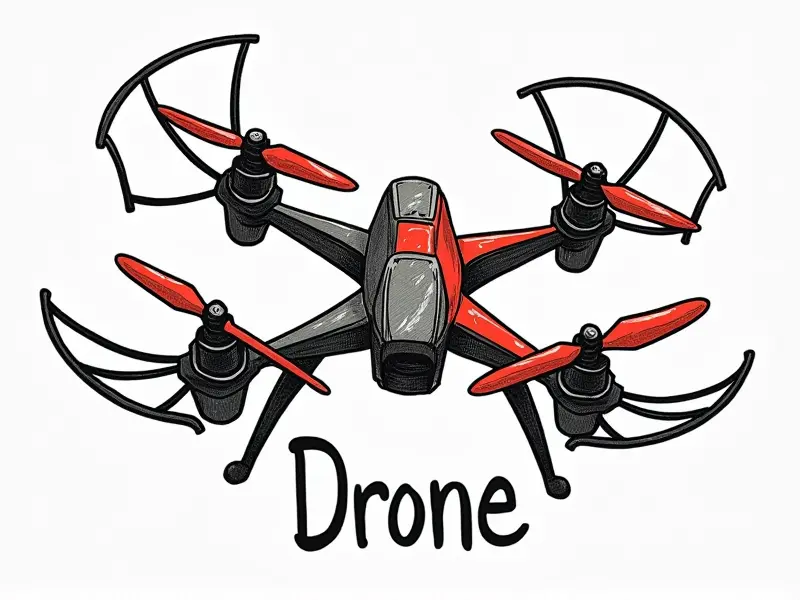Most common RC plane materials?

Welcome to the world of remote-controlled (RC) airplanes! Building or modifying an RC plane involves selecting the right materials that balance durability, weight, and performance. This article delves into the most common RC plane materials, providing you with a comprehensive guide on what to choose for your next project.
What Materials Are Best for RC Planes?
Selecting the ideal material for your RC plane is crucial as it affects both flight performance and durability. The best materials offer a combination of lightweight properties, strength, and resistance to environmental factors such as moisture and UV rays. Common choices include balsa wood, foam, carbon fiber, fiberglass, and plastic.
Top 5 RC Plane Building Materials
When it comes to building an RC plane, certain materials stand out due to their unique properties:
- Balsa Wood: Balsa is lightweight yet strong, making it ideal for constructing the frame and wing structures.
- Foam: Foam offers excellent insulation against temperature changes and can be easily cut into various shapes using a hot wire cutter. It's commonly used in RTF (Ready-to-Fly) kits.
- Carbon Fiber: Known for its high strength-to-weight ratio, carbon fiber is perfect for reinforcing critical components like the fuselage or wing spars.
- Fiberglass: Fiberglass adds rigidity and durability to RC planes without adding much weight. It's often used in conjunction with balsa wood or foam for additional structural support.
- Plastic: Various types of plastic are employed in RC plane construction, from injection-molded parts to flexible tubing used in control linkages and landing gear.
Essential Materials for RC Aircraft Models
Beyond the main structural components, several other materials are essential when building an RC aircraft:
- Epoxy Resin: Used to bond different parts together and provide a smooth finish.
- Sandpaper: For sanding down rough edges or shaping foam pieces.
- Covering Material (Monokote, etc.): Protects the plane's surface from damage and enhances aerodynamics.
- Adhesives: Various types of glue such as CA (Cyanoacrylate), epoxy, or PVA (Polyvinyl Alcohol) are used for bonding materials together.
Lightweight Materials for RC Planes Explained
The key to achieving optimal flight performance in an RC plane lies in selecting lightweight yet strong materials. Balsa wood and foam stand out as top choices due to their low density and high tensile strength, allowing for the creation of large, sturdy structures without excessive weight.
High-Performance RC Plane Materials
If you're building an RC plane designed for speed or aerobatics, consider materials that offer superior performance characteristics:
- Kevlar: Known for its extreme strength-to-weight ratio, Kevlar can be used in high-stress areas such as wing leading edges.
- GFRP (Glass Fiber Reinforced Plastic): Combines the best of fiberglass and plastic to provide a lightweight yet robust material suitable for various components.
Durability vs Weight: RC Plane Materials
The eternal trade-off in RC plane construction is between durability and weight. While heavier materials may offer better resistance against impacts, they can significantly impact flight performance due to increased inertia and drag. Balancing this requires careful selection of materials that deliver the necessary strength without compromising aerodynamics.
Choosing the Right Material for Your RC Plane
The choice of material depends on several factors including intended use (casual flying, racing, aerobatics), budget constraints, and personal preferences:
- Balsa Wood: Ideal for beginners due to ease of handling.
- Foam: Excellent choice for those looking for a quick build with minimal fuss.
- Carbon Fiber & Fiberglass: Best suited for advanced builders seeking top-tier performance and durability.
Budget-Friendly RC Plane Materials
Building an RC plane doesn't have to break the bank. Affordable materials like balsa wood, foam, and common adhesives can yield impressive results:
- Balsa Wood Sheets: Available in various thicknesses at reasonable prices.
- Foam Board: Readily available from craft stores or online retailers.
- Epoxy Resin & Sandpaper: Relatively inexpensive but essential for creating a durable plane.
Durable Materials for RC Aircraft
For those prioritizing longevity and resilience, certain materials are particularly well-suited:
- Fiberglass Reinforced Plastic (FRP): Offers excellent impact resistance while maintaining a lightweight profile.
- Balsa Wood with Carbon Fiber Reinforcement: Combines the best of both worlds – lightness and strength.
Innovative Materials in RC Plane Design
The field of RC plane construction is constantly evolving, with new materials emerging to push the boundaries of what's possible:
- Nanocellulose Composites: Show promise for ultra-lightweight yet highly durable structures.
- Graphene Foams: Offering exceptional strength and conductivity, these materials could revolutionize RC plane design.
Must-Know Materials for RC Plane Enthusiasts
To stay ahead in the world of RC planes, familiarize yourself with these must-know materials:
- Balsa Wood: Essential for structural integrity and lightness.
- Foam: Ideal for rapid prototyping and RTF kits.
- Epoxy Resin: Provides a strong bond and smooth finish.
Conclusion
Selecting the right materials is crucial to building an RC plane that meets your performance expectations while staying within budget constraints. Whether you're a beginner or an experienced builder, understanding the properties of different materials will help you make informed decisions about what works best for your project.

